Vous avez peut-être entendu dire que les chats ont neuf vies. Eh bien, c'est peut-être vrai, mais une chose est sûre :votre chat peut avoir une vie longue et en bonne santé avec les soins appropriés. Il y a beaucoup de choses à considérer lors de la prise en charge d'un chat, et nous les couvrirons toutes dans les sections suivantes :
Comment choisir un chat
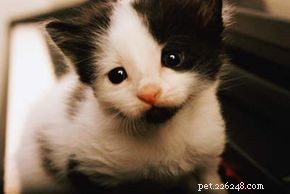
Avant d'avoir un chat, déterminez quel type de chat vous voulez :chaton ou chat adulte; poil long ou poil court; chat de race ou de gouttière; masculin ou féminin; tabby, patché ou de couleur unie.
Si vous avez à cœur une taille, un âge, un sexe, une race ou une apparence de chat en particulier, faites quelques recherches supplémentaires avant de vous lancer à la recherche d'un chat. Vous pourriez être surpris de constater que le look que vous aimez ne correspond pas bien à votre style de vie. Par exemple, si vous aimez une maison calme, un siamois n'est peut-être pas le chat qu'il vous faut :ce sont des « bavards » notoires. De même, un Persan est magnifique à regarder, mais à moins que vous ne vous engagiez à faire un toilettage presque quotidien (ou à payer un professionnel pour le faire chaque semaine environ), un joli chat à poil court pourrait être une meilleure idée. Voyages-tu beaucoup? Ensuite, vous avez besoin d'un chat plus mature - âgé d'au moins huit mois ou plus. Deux chats, c'est encore mieux pour qu'ils puissent se tenir compagnie pendant votre absence.
Chat ou chaton ?
Tout le monde aime les chatons. Ils sont mignons, drôles et câlins - cela ne fait aucun doute. Mais ne faites pas l'erreur que ce sont des "bébés". Au moment où un chaton est prêt à quitter sa mère et à vivre dans votre maison, il peut marcher, courir, sauter et grimper comme l'équivalent félin d'un enfant de dix ans. De plus, si vous obtenez un chaton aujourd'hui, dans quelques mois seulement, vous aurez un chat adulte, un chat qui vivra en moyenne 12 à 15 ans.
Si vous avez le temps, l'environnement et l'énergie nécessaires pour élever un chaton, faites-le, c'est une expérience merveilleuse. N'oubliez pas que les chatons demandent beaucoup d'entretien. Ils demandent beaucoup d'attention. Ils ont besoin de soins vétérinaires de routine consistant en injections de rappel, vermifugation et stérilisation. La plupart des jeunes chatons commencent par être affectueux et passifs, mais ils ont besoin d'être socialisés et entraînés pour le rester. et même encore, vous ne saurez pas à quoi ressemblera leur personnalité adulte jusqu'à ce qu'ils grandissent.
Enfin, les très jeunes enfants et les très jeunes chatons ne font généralement pas bon ménage. C'est bien de penser qu'un tout-petit et un chaton de dix semaines peuvent "grandir ensemble", mais cela ne se passe vraiment pas de cette façon. Dans six mois, cette petite boule de poils que votre enfant pourrait transporter sera devenue un chat adulte de plus de dix livres, et votre enfant de trois ans aura... trois ans et demi !
Trouver le bon chat
Il n'y a certainement aucun danger de pénurie de chats aux États-Unis - il y a beaucoup de chats à parcourir et plus encore. Dans la plupart des régions du pays, vous pouviez simplement ouvrir votre porte d'entrée au lever du soleil, et un chat entrerait probablement avant que vous ayez fini de déjeuner.
En fait, le nombre de chats autour vous met quelque peu dans l'embarras. Comment choisir le bon ? Sera-t-il sain ? Qu'en est-il des problèmes de santé ou de comportement cachés ? Qu'arrive-t-il au chat si les choses ne fonctionnent pas chez vous ?
Avoir un chat n'est pas comme avoir une tondeuse à gazon ou un sèche-cheveux; ils ne viennent pas avec des garanties. Chacun sera différent, ce qui signifie que des joies et des problèmes uniques accompagnent chaque chat. Pourtant, les sources pour les chats devraient vous aider à prendre une décision. Bien que la source ne puisse pas promettre que le chat ne tombera jamais malade, elle peut prendre des mesures pour donner au chat les meilleures chances possibles de rester en bonne santé. Parmi les bonnes sources pour trouver le chat qui vous convient, citons :
Amis et voisins. Il y a de fortes chances que quelqu'un que vous connaissez ait un chat ou des chatons qui ont besoin d'un foyer. Souvent, prendre un chat à un voisin ou à un ami convient mieux à tout le monde, surtout s'il s'agit d'un chaton de la litière du chat de votre voisin ou de l'animal de compagnie d'un ami allergique. Votre relation personnelle avec cette source signifie généralement que vous obtiendrez également une histoire directe sur ce chat en particulier. Cependant, quelques avertissements concernant le fait d'obtenir votre chat d'un ami ou d'un voisin :ne vous attendez pas à ce que le chat reçoive les soins vétérinaires approfondis qu'un chat d'un refuge ou d'un éleveur a, et faites attention à ne pas mélanger affaires et amitié.

Refuges pour animaux. Des millions de chats sans abri finissent par être euthanasiés dans des refuges pour animaux chaque année. Adopter dans un refuge sauve une vie, fait de la place pour un autre chat et constitue un moyen peu coûteux d'obtenir un animal de compagnie avec des vaccins et une stérilisation à faible coût. Soyez prêt à passer par des candidatures et des entretiens, dont certains peuvent sembler un peu trop personnels et insistants. Ne le prenez pas personnellement, ils ont de bonnes raisons pour cela. Assurez-vous également de vérifier les installations et l'état des animaux adoptables. Étant donné que les animaux vivent en étroite compagnie, les maladies, les vers et les puces peuvent être un problème. Pet Finders (www.petfinder.org) maintient une base de données de chats disponibles pour adoption dans les refuges locaux.
Éleveurs. Si vous voulez un chat de race pure, c'est la voie à suivre. Les bons éleveurs connaissent très bien les chats en général et leur race en particulier et font attention à qui ils vendent leurs chats. Méfiez-vous des pur-sang « marchands » et des « éleveurs de sous-sol » (personnes qui se reproduisent strictement pour le profit). Un éleveur réputé souhaite maintenir un animal de haute qualité, tient des registres minutieux et ne produit généralement qu'une ou deux portées par femelle reproductrice par an. Demandez une recommandation d'éleveur auprès d'associations nationales de races telles que la Cat Fanciers' Association (www.cfa.org).
Chats errants. Parfois, vous n'avez même pas à vous soucier de trouver le bon chat, le bon chat vous trouve. Beaucoup de gens jurent que ce sont les meilleurs chats à avoir. Il n'y a pas d'entretiens d'adoption ni de frais lorsque vous accueillez un chien errant, et il est plus que probable que vous sauvez une vie. D'un autre côté, vous devrez couvrir le coût des injections, du vermifuge, de la stérilisation, etc. De nombreux animaux errants ont d'autres problèmes de santé qui peuvent ne pas se manifester immédiatement et peuvent coûter cher à traiter. Parfois, les sociétés humanitaires locales vous aideront avec les soins vétérinaires initiaux, ou un hôpital vétérinaire de la région peut offrir des tarifs réduits pour le traitement d'un chat trouvé, mais ne comptez pas dessus.
Une autre décision importante que vous devez prendre lors du choix d'un chat est de savoir si vous aurez ou non un chat d'intérieur ou un chat d'extérieur. Découvrez les ramifications de chaque décision dans la section suivante.
Choisir un chat d'intérieur ou un chat d'extérieur
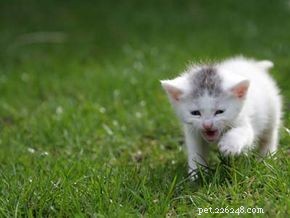
Peut-être rien n'est aussi pitoyable que le gémissement d'un chat qui veut être de l'autre côté d'une porte. Quand c'est la porte d'entrée, beaucoup d'entre nous pensent que cela signifie que nos chats ne seront vraiment heureux que s'ils sortent dehors. Mais là encore, la plupart des chats font le même genre de bruit lorsqu'ils veulent entrer (ou, d'ailleurs, lorsqu'ils veulent franchir n'importe quelle porte). Les chats veulent-ils vraiment sortir ? En ont-ils besoin ? Et même si la réponse aux deux questions est "oui", est-ce vraiment dans leur intérêt ?
Les chats ont-ils besoin de sortir comme des chiens ?
La principale raison pour laquelle les chiens sont promenés est l'élimination, suivie de près par l'exercice. Seuls les plus petits chiens peuvent courir suffisamment à l'intérieur. Les chiens sont des chasseurs de meute, ce qui signifie qu'ils travaillent en coopération pour mener leur carrière jusqu'à l'épuisement. Cela peut prendre toute la journée, ce qui signifie que les chiens ont un instinct naturel pour courir... et courir... et courir. Vous avez besoin de beaucoup d'espace ouvert pour ce genre de travail. Les chats, en revanche, sont des "chasseurs d'embuscades". Ils s'appuient sur des rafales relativement courtes de course très rapide. Un couloir de n'importe quelle longueur décente offre beaucoup de place pour cela. Cela, combiné à l'instinct d'enterrer les déchets (c'est pourquoi les chats utiliseront un bac à litière), ne constitue aucune raison impérieuse d'emmener un chat à l'extérieur.
Est-il naturel qu'un chat sorte ?
Bien sûr, l'air frais et le soleil sont bons pour tout le monde - humain ou chat. Mais la vie en plein air est-elle vraiment plus "naturelle" pour votre chat ? Bien sûr, ses ancêtres sauvages vivaient à l'extérieur. Mais c'était il y a quelques milliers d'années et plusieurs centaines de générations. Pour couronner le tout, ces ancêtres vivaient dans les régions arides du Moyen-Orient, bien loin du climat et de l'environnement des États-Unis d'aujourd'hui. Une fois que les chats ont été domestiqués, ils ont cessé d'être complètement « naturels » ; une fois déracinés de leur habitat d'origine, ils ont dû faire de leur mieux pour adapter à leur nouvelle situation des instincts aiguisés au cours de dizaines de milliers d'années de vie dans les déserts du Moyen-Orient. Certaines de ces circonstances - le froid glacial d'un hiver du Midwest, des chiens et des animaux sauvages qui les transformeront de chasseurs en chassés, et des voitures et des camions à grande vitesse, pour n'en nommer que quelques-uns - auxquels ils ne peuvent jamais vraiment s'adapter.
La nature pas si géniale
Qu'est-ce qui attend votre chat juste devant votre porte d'entrée ? Oui, il y a des arbres et de l'herbe et toutes les images, les sons, les odeurs et les joies de la nature - de bonnes choses à savourer pour nous tous. Mais il y a aussi des animaux vicieux, des personnes cruelles, des agents de la circulation, des maladies et du contrôle des animaux (qui peuvent être dans leur droit légal d'attraper et de mettre en fourrière votre chat, s'il sort de votre propriété). Le seul moyen fiable de protéger votre chat de tous ces dangers mortels est de le garder à l'intérieur.
À vrai dire, les chats de la campagne ne sont pas nécessairement plus en sécurité à l'extérieur que les chats de la ville. Bien sûr, il y a beaucoup plus de chances d'être heurté par une voiture ou mutilé par un chien errant dans la ville. Mais à la campagne, nous avons des prédateurs qui courent plus gros, plus rapides et plus avisés qu'un chien sauvage de la ville. Nous avons également moins de lumière sur les routes, ce qui rend les animaux errants plus difficiles à voir - et plus faciles à frapper - et généralement plus d'espèces d'insectes porteurs de maladies, comme les tiques.
Toute une série de maladies félines graves et mortelles nécessitent un contact avec des chats infectés - ou des zones où les chats infectés traînent beaucoup - pour se propager. Le virus de l'immunodéficience féline (FIV), qui provoque une dégradation du système immunitaire du chat, est principalement transmis par les morsures de chats infectés. Et le virus de la leucémie féline (FeLV) nécessite généralement un contact étroit prolongé avec un chat infecté, comme le partage de bacs à litière ou de bols de nourriture et d'eau, ou un toilettage mutuel. Maintes et maintes fois, les risques de maladie sont mineurs ou négligeables pour les chats d'intérieur, nettement plus élevés pour les chats d'extérieur ou d'intérieur/extérieur. Les propriétaires de chats - en particulier ceux qui ont de jeunes enfants - doivent être particulièrement conscients que les chats d'extérieur sont plus susceptibles de contracter des maladies et des parasites qui peuvent affecter les humains, des désagréments mineurs comme les puces à des maladies plus graves comme la maladie de Lyme à des conditions extrêmement dangereuses comme la rage.
Sortir en toute sécurité
Ce n'est pas parce qu'il est plus sûr pour votre chat de vivre à l'intérieur et de ne pas se promener librement qu'il ne peut jamais voir la lumière du jour sauf par la fenêtre. Une laisse et un harnais (pas un collier) sont un moyen assez sûr pour vous et votre chat d'avoir de l'air frais et du soleil. Marcher en laisse est un goût acquis que certains chats n'acquièrent cependant jamais. Une expérience régulière de la vie de chaton aide, et certains chats dressés en laisse demanderont même une promenade. Bien sûr, un chat tenu en laisse risque toujours d'attraper des puces et de rencontrer des chats et des chiens en laisse dans le voisinage.
Construire une course de chat n'est en fait pas aussi difficile qu'il y paraît. Les enclos doivent être fermés de tous les côtés (y compris le dessus) et solidement ancrés et construits. Les écrans doivent être de la qualité la plus lourde de maille extérieure et les murs doivent s'étendre à quelques centimètres sous le sol pour empêcher les chats de se frayer un chemin - ou d'autres animaux de s'y frayer un chemin. Si le parcours n'est pas construit attaché à votre maison avec une chatière ou une autre porte menant à l'intérieur, assurez-vous qu'elle comprend une sorte d'abri chauffé et étanche où votre chat peut se retirer en cas de mauvais temps.
Il est particulièrement important qu'un enclos ou un autre enclos extérieur ait un toit. Les chats sont de formidables grimpeurs et sauteurs, et même un mur de huit à dix pieds peut ne pas les retenir, surtout s'il y a des écrans auxquels s'accrocher. Le toit et les murs de l'enclos offrent également un autre type de sécurité :ils empêchent d'autres choses d'entrer. Les ouvertures dans le toit ou les murs permettent aux animaux, aux personnes et aux objets hostiles ou dangereux d'entrer dans une zone à laquelle votre chat ne pourra peut-être pas s'échapper.
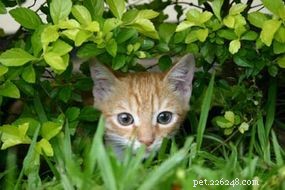
Les chats en liberté se disputent tard dans la nuit avec d'autres chats, mâchent ou déterrent les plantes des voisins, tuent les oiseaux locaux (mais peuvent également aider à contrôler la population locale de rongeurs) et enterrent leurs déchets dans les jardins d'autres personnes. Alors que certaines personnes – et certains propriétaires de chats – les considèrent comme des désagréments mineurs, de nombreuses autres personnes les considèrent comme des problèmes beaucoup plus graves. Si votre chat se bat, il peut faire plus que réveiller les voisins à cause des miaulements et des cris. Les égratignures superficielles que vous pouvez voir sur son visage ou son dos ne sont pas si graves. Mais il peut aussi avoir des morsures qui se referment rapidement, emprisonnant la saleté et les germes et créant un abcès douloureux quelques jours plus tard. Les morsures lors de combats semblent également être le principal moyen de propagation du virus de l'immunodéficience féline. Les chats non modifiés qui errent librement contribuent également à la surpopulation d'animaux de compagnie, un problème qui remplit les refuges pour animaux à pleine capacité et au-delà, ce qui entraîne l'"endormissement" de millions de chiens et de chats chaque année.
Maintenant que vous avez choisi le chat parfait pour vous, il est temps d'apprendre à en prendre soin. Nous commencerons dans la section suivante par des conseils pour nourrir votre chat.
Conseils pour l'alimentation des chats
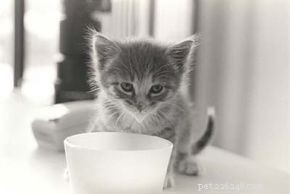
"Vous êtes ce que vous mangez" est un bon sens qui est tout aussi vrai pour votre chat que pour vous. Donnez à votre chat une alimentation de qualité et vous aurez plus de chances d'avoir un chat en bonne santé.
L'industrie des aliments pour animaux de compagnie est une grosse entreprise - et pour cause. Il y a bien plus de 100 millions de chiens et de chats vivant dans des foyers américains, et on ne sait combien d'autres dans des refuges, des chatteries et des chenils à travers le pays. Pour couronner le tout, vous avez des milliers de personnes qui nourrissent des animaux errants. Si vous pensez qu'un seul chat peut consommer environ 90 livres ou plus de nourriture pour chat en un an, nous parlons de centaines de millions de dollars dépensés chaque année, juste pour nourrir le chat.
Tout comme la nourriture humaine, il existe de délicieuses friandises félines qui sont bonnes pour les chats et certaines choses qui sont essentiellement de la malbouffe. Une collation occasionnelle d'aliments pas si sains ne devrait pas causer de dommages permanents, mais n'en faites pas un élément régulier de l'alimentation de votre chat.
Les chats peuvent-ils être végétariens ?
Les ancêtres sauvages du chat domestique moderne étaient des chasseurs - un instinct que votre chat a toujours. Que Tabby vous apporte des cadeaux d'oiseaux et de souris morts ou qu'elle saute sur un morceau de peluche, elle exprime un puissant désir naturel de traquer et de tuer des proies. Si vous doutez que votre chat soit un mangeur de viande (et un prédateur) naturel, jetez simplement un coup d'œil à ses dents la prochaine fois qu'il bâillera. Ces crocs ne sont pas conçus pour manger des germes de luzerne.
Le fait est que votre chat est tellement carnivore qu'il ne peut pas survivre en tant que végétarien. Certains nutriments ne se trouvent que dans les protéines animales dont votre chat a besoin. L'un de ces nutriments est un acide aminé appelé taurine. Sans taurine, les chats peuvent devenir aveugles et développer une hypertrophie du cœur, qui les lâchera probablement bien avant leur temps. Et contrairement aux chiens, les chats ont besoin d'une source alimentaire de vitamine A et d'un acide gras appelé acide arachidonique que l'on ne trouve que dans les tissus animaux. C'est pourquoi vous ne devriez jamais donner de nourriture pour chien à votre chat. La nourriture pour chiens ne contient tout simplement pas assez des bons types de nutriments pour les chats. À la livre, il peut être moins cher de donner de la nourriture pour chien à votre chat, mais cela pourrait lui coûter sa santé, sa vue ou même sa vie.
Bien sûr, cela ne signifie pas que vous devez nourrir votre chat avec de la viande crue ou le laisser dépendre de la chasse comme seule source de nourriture. Cela fait des centaines d'années que les chats ne vivaient plus à l'état sauvage, donc leurs talents de chasseur sont plus qu'un peu rouillés. De plus, les chats qui chassent ou mangent de la viande crue ou insuffisamment cuite peuvent contracter plusieurs types de maladies, dont certaines peuvent vous être transmises.
Veuillez manger les marguerites
S'il est vert et qu'il pousse à partir du sol, il y a de fortes chances qu'un chat essaie de le manger. Cette bizarrerie végétarienne dans la personnalité du chat carnivore est particulièrement inquiétante si les plantes en question sont vos plantes d'intérieur les plus prisées, ou pire, si elles sont toxiques pour votre chat.
De nombreux propriétaires de chats considèrent la consommation de plantes comme un problème de comportement - et c'est si le chat mange des plantes que vous ne voulez pas qu'il le fasse. Certaines personnes supposent qu'un chat qui mange des plantes ne reçoit pas assez des bons types d'aliments dans son alimentation. Ils ont raison aussi, mais seulement dans le sens où ce dont le chat a le plus besoin dans son alimentation, ce sont... des plantes.
Les experts ont quelques idées sur les raisons pour lesquelles les chats mangent des plantes. Cela peut être pour obtenir des oligo-éléments, pour aider à la digestion ou comme émétique pour aider à faire remonter les cheveux avalés et d'autres produits non alimentaires. Quelle que soit la raison, manger de la végétation est un comportement instinctif chez les chats; vous ne pouvez pas l'arrêter. La meilleure chose à faire est donc d'orienter le comportement dans une direction avec laquelle vous pouvez tous les deux vivre.
Plantez un "jardin de chat". Vous pouvez trouver des kits prêts à l'emploi dans les animaleries et les catalogues, mais un choix plus économique consiste à le faire vous-même. Si vous êtes bricoleur, vous pouvez construire un récipient de fantaisie en bois ou vous pouvez simplement utiliser quelque chose à portée de main. Quoi que vous fassiez, assurez-vous de planter votre jardin pour chat dans un récipient qui ne bascule pas ou ne bouge pas facilement. Tout ce dont vous avez besoin est de quelques centimètres de bon terreau et de quelques graines. L'herbe d'avoine ou l'herbe à chat sont de bons choix. Vous voudrez peut-être garder le jardin hors de portée de vos chats pendant que votre "récolte" approche, mais une fois que les verts mesurent quelques centimètres de haut, étalez-le et laissez Tabby mâcher à volonté.
Mettez vos plantes hors de portée. Les chats sont des grimpeurs et des sauteurs incroyablement bons, donc mettre vos plantes d'intérieur sur des supports ou des étagères ne vous aidera probablement pas beaucoup. Les cheminées, les appuis de fenêtre, etc. sont des aires d'atterrissage faciles pour les acrobates félins. Accrochez des plantes au plafond, placez-les derrière des barrières à l'épreuve des chats (sur une véranda fermée par des portes vitrées, par exemple) ou placez-les dans des endroits où votre chat ne peut absolument pas sauter, grimper ou ramper.
Protégez vos plantes. Si vous ne pouvez pas mettre vos plantes hors de portée de votre chat, essayez de former un bouclier protecteur autour de vos plantes. Placer du grillage, des marqueurs de plantes ou même des boules de naphtaline dans le sol autour de votre plante peut la protéger des pattes indiscrètes, mais ces barrières ne sont pas si jolies à regarder. Essayez d'ajouter de la mousse espagnole autour de la base de votre plante pour éloigner votre chat. Parfois, la pulvérisation d'amers sur les feuilles découragera un chat de mâcher. D'autres fois, cependant, mettre une substance au mauvais goût sur une plante fait plus de mal à la plante qu'aux dents du chat.
Collations Kitty et "Nourriture populaire"
Un chat bien nourri n'a pas plus besoin que vous de grignoter entre les repas. Des collations trop fréquentes auront le même effet sur votre chat qu'elles peuvent avoir sur vous :une prise de poids malsaine et une alimentation déséquilibrée.
Bien sûr, il est difficile de résister à la tentation de donner une friandise à votre ami félin de temps en temps - et il est parfaitement normal de céder à cette tentation, en supposant qu'il y ait suffisamment de temps entre maintenant et alors. La durée dépend de votre chat et des types de friandises que vous lui donnez. Si votre chat mange toujours la quantité recommandée d'une nourriture pour chat de qualité tous les jours et qu'il n'est pas en surpoids, vous ne lui donnez probablement pas trop de friandises. Si, d'un autre côté, votre chat avale des collations savoureuses mais pas si nutritives et qu'il grossit ou qu'il lève le nez au dîner, il est temps de changer de stratégie.
Les friandises pour chats achetées en magasin ont tendance à ne pas contenir une bonne nutrition. Leur objectif principal est le même que celui des friandises humaines :avoir bon goût - vraiment bon - et c'est à peu près tout. "Gourmet" cat snacks usually have fewer artificial colors and fillers in them but still aren't meant to be fed as a regular part of Tabby's diet. The good thing about "gourmet" treats is the cost:They're usually so expensive that cat owners won't overfeed them to their cats!
A question vets hear all the time is, "Can I feed my cat people food?" There's very little that people eat that cats shouldn't (or won't), so that's not really so much of a problem. (Cat owners should be careful about feeding dairy products to their pets. Although cats love dairy products, many don't digest them well and may get sick.) The question once again is nutritional balance. Just like with home cooking, feeding your cat leftovers or using people food for snacks may not be providing her with the right nutrients in the right amounts.
Still, people food might provide some of the healthiest snacks for cats. If you give your cat some scrambled eggs or a couple of pieces of pasta, at least you know what's in it. And you might be surprised what your cat will eat. Cat owners report their pets begging for predictable tidbits such as fish and chicken as well as unexpected ones, including tomatoes and cantaloupe.
Water, Water Everywhere
Your cat needs about an ounce of water per pound of body weight every day. That doesn't sound like much, but it adds up:An average-size cat would need two quarts of water every week.
Of course, cats get water by drinking. But there's another important source of water for your cat:the food she eats. The more water there is in her food, the less she needs to drink. Canned cat food is more expensive because you're buying water along with the food (up to 75 percent of wet cat food is water) and paying a little more for the container. Dry cat food has much less water (perhaps 10 percent by weight), which means a cat whose diet consists of only dry food has to drink a lot more.
Dehydration (not enough water in the body) is a serious problem for any living creature, and cats are especially prone to it. A cat can go without food for days, losing up to 40 percent of her body weight, and still survive. But a loss of body water of only 10 to 15 percent can kill her. Other liquids -- like milk, if it doesn't make your cat sick -- are a good source of water, but nothing beats the real thing. Be sure your cat has plenty of clean, fresh water available at all times.
We will conclude our examination of cat food with a discussion of store-bought cat food vs. homemade cat foods in the next section.
Store-Bought Cat Food vs. Homemade Cat Food
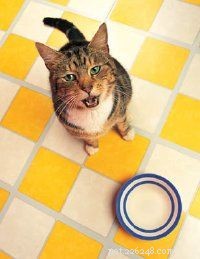
The best thing about a home-cooked meal is you're the one who gets to decide what's in it. If you're a steak-and-potatoes type, then you'll broil up a nice lean Porterhouse and a batch of new reds. On the other hand, if you go for a green salad, you can pick your dinner fresh from the garden. Trying to cut down on cholesterol and salt? When you're the cook, you make the call.
Unless you are a nutritionist or dietitian, however, you should let the experts -- the major pet food manufacturers -- prepare the major portion of kitty's diet. Working out the right amounts and balance of foods is a difficult task. Most food can get lumped into one or more of three categories of nutrition:protein, fat, and carbohydrate. Different kinds of animals (including people) need different proportions of protein, fat, and carbohydrate in their diets. (That's another reason why dog food isn't good for cats -- dogs and cats need different percentages of fat and protein to stay healthy.) What's more, those needs change during an animal's life. A kitten has different nutritional needs than an adult cat, and they both have different needs than an old codger cat. Most pet food companies have special formulas for different levels of age and activity, and there's a whole line of prescription diets for cats with various health problems.
We've all seen a cat come running at the sound of a can opener -- there's no doubt that kitty loves getting canned food. But is canned food better for cats than dry food? Pas nécessairement. Each type of food has its advantages and disadvantages. The most important factor is whether the food meets your cat's nutritional needs. Of course, your budget and your cat's preference also play a role in which type of food you should choose. Store-bought cat food comes in three general forms:
Each of these types of foods has its strong points and weak points. For instance, dry food is convenient, economical, and can be left out all day. On the other hand, the way some dry foods are formulated seems to encourage the formation of bladder stones. The rich aromas of canned food will tempt even the most finicky eater, but the crunchiness of dry food helps prevent dental plaque. Semimoist combines the convenience of dry food with the tastiness of canned food but may contain the most nonfood fillers and dyes.All brand-name cat food covers the basic nutritional needs of your average cat. But if you're worried about the overall quality of the boxes, bags, and cans of feline food in the pet supplies aisle of your local market, you might want to consider one of the premium-brand foods, usually found only in pet stores or through veterinarians. Feeding your cat store-bought food ensures that she is getting the nutrients she needs. At the same time, a home-cooked supplement to your cat's regular diet is okay if you make sure the foods you select are appropriate for cats. There's nothing wrong with getting the most out of a whole fryer by cooking up the gizzards for the cat, unless they become the major part of Tabby's diet. You see, organ meats (kidney, stomach, and even liver) are all right for your cat in moderation, but they've been linked to health problems if your cat eats too much of them. Likewise, every cat on the planet loves milk and cheese, but most cats have trouble digesting them well.In the next section, we will cover another very important aspect of cat ownership -- grooming.
What's In Cat Food?
Careful consumers are label readers -- and that's a good place to start in figuring out just what you're feeding your cat when you buy cat food.Many pet owners compare the nutrition information on different brands of pet food and notice that a less-expensive brand has the same nutrients as a premium cat food. What that really means is that those two foods match up in the laboratory. For example, old shoe leather might rate as high as lean chicken breasts in protein content; of course, you and your cat would both rather eat chicken. So, what you need to know is how the various nutrients match up in your cat.You see, it's not how much of a particular nutrient there is in a can of cat food that matters but how much your cat's digestive system can take up. Cheap foods are usually made from cheap ingredients, which your cat may not digest well. Just because your cat gobbles it up and yowls for more doesn't mean a food is good for her. (Think about kids and junk food.)
The moral of the story is brand-name and specialty pet foods are made by companies that do a lot of research into pet nutrition. They're always improving their foods to keep pace with the latest information, and they use quality ingredients that have nutrients your cat can use. It may cost a little more, but it's worth it.
Lire la suite
Cat-Grooming Tips

Ever wonder why some cats always look sleek and beautiful and others look like...well, like something the cat dragged in? While it's true that some cats (like some people) are just born with "good hair," a lot of it has to do with grooming. Now, cats are fastidious critters. They tend to take care of themselves pretty well, always licking their fur to keep it clean and in its proper place. But any cat can go from Fluffy to Scruffy without a little help from her human pals.
Longhair vs. Shorthair Cats
The magnificent coat of a champion Persian is truly a work of art. But you'd better believe that it took hours of regular grooming to get it -- and keep it -- that way. It's common sense that the more hair there is to take care of, the more work that goes into it. The fluffier the cat's hair, the more likely it is to form mats, too. These thick tangles of hair can be painful and even tear a cat's skin if the mats get bad enough. Mats get embarrassing for a cat, too, since the only way to get rid of really bad ones is to shave them off. Nothing looks more uncomfortable than a cat who has been shaved.
It's not that shorthair cats don't need regular grooming or never get mats -- they do. It's just that their shorter, coarser outer coat requires lower maintenance than a long, silky coat. A shorthair cat who's diligent about her own grooming routine can do a lot to make up for an owner who's a little lazy with the brush and comb. But regular grooming is still a must for both longhair and shorthair cats.
Cats use their tongue and teeth for grooming. Every time Tabby goes into her contortionist bathing routine, she's swallowing hair. The more hair she has (and the more grooming she does), the more hair she swallows. Hair doesn't digest and can clump up in a cat's stomach and intestines to form hairballs. The least dangerous, but still rather unpleasant, side effect of hairballs is your cat coughing them up -- quite often at times or in places you'd much rather she didn't. On a more serious note, a lot of swallowed hair can actually block your cat's intestines, calling for an operation to save her life. The bottom line, as they say in the city, is to invest a few dollars in a brush and comb -- and use them.
Do I Need a Professional Groomer?
Because longhair cats need regular grooming (with daily grooming really being the best), you might want to consult your budget before answering this question. But even if you have the means to bring your longhair cat to a professional groomer weekly, you should still have grooming tools on hand at home -- and know how to use them. You never know when your cat might get into something that needs to be combed out right away or when she might need a touch-up between trips to the groomer.
The main advantages of a professional groomer are training, skill, and experience. A good groomer can get your cat's coat looking spiffy quickly and humanely, with a minimum amount of trauma. Really bad mats and tangles can be dealt with at home, but if you've never done that sort of thing before, you run the risk of injuring your cat -- an injury that will probably need veterinary attention. Such grooming problems are probably best left to the professionals, too.
Even folks who learn to wield a slicker brush and metal comb with a good amount of expertise will turn to a professional groomer from time to time. It could be for a bad mat or tangle, during a particularly heavy period of shedding, or just to get the full treatment so that Tabby looks her best.
Tools and Tips for At-Home Grooming
Every cat owner needs some grooming supplies. A metal comb is the most essential basic grooming tool. Sturdy stainless-steel combs with wide-set, round teeth are widely available and reasonably priced. A slicker brush has bristles that look like dozens of tiny bent nails. They resemble the rasps on a cat's tongue and serve the same purpose in grooming. Most cats enjoy the sensation of the slicker brush and the metal comb -- unless, of course, you hit a tangle or mat.
You may also want to invest in a flea comb, particularly if you let your cat outdoors, live in a year-round flea climate (like southern Florida or Louisiana), or have other pets who go outdoors. Flea combs look like metal combs but with very fine teeth set close together. Flea combs can be used for regular grooming, as a "touch-up" after the slicker brush or metal comb. Grooming mitts fit over your whole hand and let you work a larger surface while petting your cat.
Here are a few tips for home grooming:
Make it fun. Most cats love being stroked and enjoy the feeling of light grooming. It's good social behavior -- cats who get along well will blissfully groom each other for long periods of time. When it's time to do some grooming, approach your cat in a friendly way, and intersperse the grooming strokes with some regular petting.
Use restraint. It's okay to restrain your cat (gently!) as long as she doesn't start to panic, but be sure to restrain yourself, too. Don't try to force your cat to sit still or stay in an awkward or uncomfortable position for too long. And be careful not to get too exuberant in your grooming strokes. Think about how much you don't like having your hair pulled, then imagine what it's like to have hair getting pulled all over your body.
Know when to quit. You may not be able to groom your cat completely in one session. C'est bon. If you get her back and tail, and then she starts to fight you, give up and try finishing in a day or two. It's better to have a half-dozen five-minute grooming sessions spread out over a week and a happy cat than one 25-minute battle and a cat who runs and hides at the sight of the brush.
Get professional help. If your cat has a bad mat or tangle -- or gets something nasty on her fur -- put a call in to your veterinarian or professional groomer. If your cat just doesn't seem to be cooperating with home grooming, schedule an appointment with a professional. While you're there, ask for some tips and a demonstration of basic techniques. Groomers are usually happy to do this for clients; there's nothing more annoying for a groomer than having to constantly shave out and untangle bad mats. The cat suffers, and the groomer is more likely to get bitten or scratched.
Grooming is only part of the story, however. In the next section, we will look at some tips for bathing your cat.
How to Clip Your Cat's Nails
You can invest in specialized cat nail clippers if you'd like, but ordinary human nail clippers will work just as well. Restrain the cat with a gentle football hold. Gently squeeze the cat's toe between your thumb and forefinger, extending the nail. Gently clip off the sharp tip, being careful to stay in the clear portion toward the end of the nail (you should be able to see the reddish "quick" through the nail; don't cut this far or you'll cause discomfort and bleeding). Repeat with each toe.
No cat enjoys having her nails trimmed, but if you start them as kittens it will be easier when they're adults. Also be sure to play with your cat's paws and toes for fun sometimes, too; otherwise she'll always know you're going to cut her nails the minute you take hold of her paw.
Lire la suite
Cat-Bathing Tips
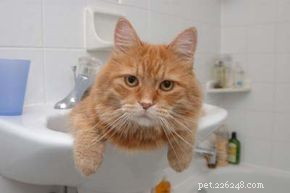
Except for removing a mat or performing a medical procedure, there is almost no other reason to shave a cat's hair. Cats are built to have a full coat of hair -- taking it away can throw off regulation of their body temperature and expose the usually protected skin underneath. Trimming a longhair cat's coat for appearances and to prevent tangles is fine, but it should be done by a professional groomer.
It's usually not necessary to bathe a cat, either, since they do so well keeping themselves clean. Sometimes, though, a bath is called for to treat or control fleas, to clean up an adventurous feline explorer, to treat a skin condition, or to remove a noxious or dangerous mess from your cat's fur. The squeamish, the inexperienced, and the uncertain should probably let a veterinarian or groomer take care of these mandatory baths. For those who want to try it at home, here are several bath basics.
Be prepared. Lay out your bathing supplies ahead of time. You'll need a good pet shampoo (get medicated shampoos for fleas or skin conditions from your vet, not over-the-counter); a large fluffy towel; a brush and comb; and either a handheld shower head or plastic tumbler for wetting and rinsing. It's a good idea to comb out your cat's hair before bathing, if possible, especially for longhairs. If you know how, now is the time to trim your cat's nails. (Note:You can protect your cat's eyes during a bath with a neutral ophthalmic ointment available from your veterinarian.)
Ready your bathing stations. Use a large sink with a dish sprayer attachment or the bathtub. Start the water before you put the cat in, and make sure it's not too hot or too cold. A comfortable temperature for your hands should work fine. You're going to get wet, splattered with suds, and possibly jumped on by an upset, sopping cat, so dress appropriately in clothes that can get soiled yet protect you from scratches.
Before you add the cat. Bathing a cat is often a two-person job -- one to restrain and one to bathe -- but you can do it yourself. Either way, practice restraint techniques on dry land before the bath. With one hand, grasp your cat firmly but gently at the base of the neck or on the scruff, pressing down slightly. See how well you can reach the various parts of your cat's body with the other hand. Figure out when and how you'll have to change grips during the bath. Get your bathing routine down step-by-step before the cat is in the tub or sink; otherwise, Tabby will be able to make a break for it in your moment of hesitation or confusion.
Start the suds. Wet down your cat, starting from the head and working your way to the tail. Apply the shampoo the same way, lather, and rinse thoroughly. (Read the label directions on medicated shampoos carefully. Some require 5 to 15 minutes before rinsing in order to be effective.) Thorough rinsing is important. Leftover soap residue can irritate your cat's skin or be swallowed when your cat licks her fur. Rinsing also gets rid of fleas and other parasites that are immobilized -- but not killed -- by the bath.
Drying a cat. Gently squeeze excess water out of your cat's fur, wrap her up in a large fluffy towel, and dry her off. If she'll stand for it, you can comb out any tangles right away; otherwise, wait until she's dried off and settled down. If you're lucky, your cat may tolerate the sound and feel of a blow dryer. Don't count on it, though -- many cats are terrified by them. This is not something to discover right after a bath. See how your cat reacts to the blow dryer on a non-bath day. If she's scared witless, stick with a towel. You might be able to gradually get her used to the sound and feel (especially if you begin regular baths in kittenhood) -- and then again, you might not!
A large part of keeping your cat healthy is removing potential dangers from your cat's environment. On the next page, we will show you how to cat-proof your home.
How to Cat-Proof Your Home
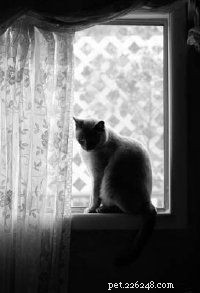
We all know to keep dangerous substances away from children, and it's important to remember that we should be even more careful with cats. We all know the old saying about what curiosity did to the cat. Because they are smaller, more mobile, and have more sensitive noses than children, cats are more likely to investigate, getting into things that can be dangerous. To prevent your cat's curiosity from becoming fatal, there are a few household dangers to look out for.
Drapery, blind, and electrical cords. To your cat's eye, the dangling end of a drapery or blind cord is an open invitation to play -- and possibly to disaster. Even just crawling between drapes or blinds and the window (an all-time favorite feline pastime) can land Tabby in a tangle. Cats who get caught in the loops of pull-cords panic. At the very least, the blinds or drapery rod will come down with a crash. At worst, a cat can strangle, do fatal internal damage, or actually get so worked up that his heart gives out. For maximum safety, tie or wrap all window cords well out of feline reach.
Electrical and telephone cords pose something of a tangling threat but more often are dangerous on account of chewing. It might be the taste or texture of the plastic coating, but for some reason, a lot of cats can't resist nibbling. There's not much direct danger in chewing phone cords (except when you try to make a call on a line that's been put out of commission by your cat) since there's very little current running through them.
Electrical cords are another story altogether, of course. Wherever possible, run the cords under rugs and carpets or behind furniture that sits flush to the floor and wall. If a cord has to be run where a cat can reach it, buy some inexpensive plastic conduit, which is available at most hardware and building supply stores. For a larger investment, you can get flat strips of heavy-duty vinyl that not only protect the electrical cords, but also keep the cords flush to the floor to prevent tripping.
Occasionally, a very determined cat will make his way through all the physical barriers. Treating the cords with a bad-tasting substance like bitter apple might do the trick. A little behavior modification, using positive reinforcement, will help, too.
Cleaning fluids, antifreeze, and other poisons. We don't just buy cleaners to get our house clean; we want it disinfected and smelling nice, too. Unfortunately, some of the very products we buy to sanitize and deodorize pet areas are outright dangerous for your cat.
Pine-based cleaners and those containing phenol (the most popular being Lysol disinfectant) are particularly toxic to cats and shouldn't be used on food bowls or in pet areas, sleeping quarters, or litter boxes. Of course, any cleaning compound can be poisonous if taken internally, so keep everything secured in a locking cabinet. (A simple spring latch won't keep a determinedly curious cat out.)
Ethylene glycol is the stuff that makes antifreeze work. It just so happens that it also smells and tastes very sweet. A significant number of cats and dogs -- and even small children -- suffer from ethylene glycol poisoning every winter. Because it's present in large amounts in almost every home and is often very fatal if swallowed, antifreeze and other products containing ethylene glycol should be considered dangerous and never left where pets or children can get to them.
Cats who go outdoors run the added risk of lapping up antifreeze spills and drips, an especially tempting thing for a thirsty cat to do since those puddles of tasty liquid don't freeze on cold days. You can protect your own cat (and other outdoor cats and strays) by immediately cleaning up and washing down any of your own spills or drips, or you can purchase one of the new nontoxic brands of antifreeze that contain propylene glycol rather than ethylene glycol. It's important to also keep in mind that once your cat leaves your property, there's no guarantee that everyone else in the area is going to be equally careful.
In general, anything that's toxic to you will be poisonous to your cat as well. The rule of thumb is:If you'd keep it out of reach of a child, keep it out of reach of your cat.
Poisonous plants. A cat chewing on your houseplants is more than an annoyance, it can be dangerous or even fatal to the cat.
Technically, any plant that makes your cat sick when eaten is a "poisonous" plant. (Nearly all cats will eat grass or plants to purge themselves, however, so vomiting alone may not be a reliable sign of poisoning.) Still, some plants have particularly serious effects. The list of potentially poisonous plants includes:apricot (pits), azalea, buttercup, caladium, calla lily, castorbean, cherry (twigs, leaves, bark, fruit, and stones), chrysanthemums, crocus, daffodil (bulbs), daphne (berries), holly, hydrangea, iris (leaves, roots, and fleshy parts), ivy, lily of the valley (leaves, flowers, roots), mistletoe (especially the berries), mushrooms, narcissus (bulbs), oak (acorns, young shoots, and leaves), oleander, peach (pits), philodendron, poison ivy, potatoes ("eyes" and sprouts from the eyes; the edible part of the potato is safe), privet, rhubarb (leaves), rosary pea (shiny red and black seeds), star of Bethlehem (bulb), string-of-pearls, sumac, and sweet pea (seeds and pods).
Dieffenbachia is a fairly common houseplant that also goes by the name of "dumb cane." The dumb cane is aptly named. Chewing dieffenbachia can actually paralyze your cat's mouth, making it impossible for him to eat and drink. The name "dumb cane" comes from the most noticeable effect of this paralysis on people:They can't talk.
Poinsettias (Christmas flowers) belong to the nightshade family -- flowers notorious in fact and literature for their deadly properties. A study a few years back seemed to show that poinsettias -- long believed to be dangerously toxic to cats and dogs -- don't make cats any sicker than many plants considered nonpoisonous. Still, it's always safest to keep cats away from any houseplant, just to be sure.
Windows, balconies, and screens. "High-rise syndrome" might sound like some sort of pop psychology explanation for violent crime, but it actually describes an epidemic that hits a number of cats every year, especially in warmer weather. "High-rise syndrome" is a collection of various injuries that are the result of a fall from a high window.
Amazingly, there are many stories of cats surviving falls from several flights up. But there are far more who fell and didn't make it. The saddest part of it is nearly all of those falls could have been prevented.
Every window that you plan to open needs to have a screen. And not just any screen. A cat-proof screen has to fit the window frame securely enough to stay firmly in place when confronted by ten or more pounds of cat. When ordering or replacing screens, use a heavy-duty grade of hardware cloth since ordinary screens can be easily torn by claws or teeth. Even a fall from a second- or third-story window can cause serious injury or death, so inspect all screens regularly, especially toward the end of winter in cold-weather areas of the country. Screens can warp, tear, or fatigue in the off-season.
Some city cat owners think letting Tabby out on the balcony of their apartment is a safe way to give him some fresh air and sunshine. Actually, a good number of "high-rise syndrome" cats were stalking moths, birds, or other irresistible things on an upper-floor balcony, when an ill-timed pounce or missed step sent them over the railing. Even a leash or tether on an open balcony doesn't ensure your cat's safety. A panicked cat dangling by his collar or harness can be strangled, seriously injured, or squirm loose and fall anyway.
Though you buy toys to amuse your cat, the wrong toy can be dangerous. In the next section, we will teach you what toys are safe for your cat.
The Animal Poison Control Hotline
"My cat is a chowhound -- she never misses a meal," one cat owner recalls. "So when she didn't come running at dinnertime, I knew something was very wrong. I found her under the bed, and when I coaxed her out, she was staggering and drooling. I was terrified. She had this funny smell, which I recognized as the cleaning fluid I kept in my linen closet. I ran to the closet, and I found the door open and the can of cleaning fluid spilled on the floor.
"The problem is, we live a good 30 minutes from the nearest veterinarian. I didn't know how long she had been poisoned, and I wasn't sure that she had another half hour to spare. Then I remembered about the hotline -- and it saved my cat's life."
The ASPCA National Animal Poison Control Center (also called the Animal Poison Hotline) is operated by the University of Illinois College of Veterinary Medicine. Call 1 (888) 426-4435. There's a $55 flat fee, chargeable to a credit card (have your charge card ready). For more information, contact ASPCA Animal Poison Control Center (1717 South Philo Rd., Suite 36, Urbana, Illinois 61802).
Lire la suite
Cat Toys
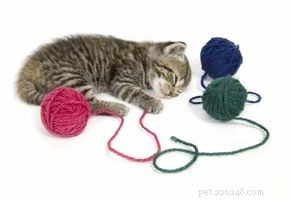
It's like something right out of a Norman Rockwell painting:a fuzzy little kitten tumbling around with a ball of yarn. Well, old Norman apparently never had to rush his cat to the vet for emergency surgery to get a couple of feet of that yarn unraveled from the poor cat's digestive tract. Yarn and string can turn even the most disinterested cats wide-eyed and playful but should never be left where cats or kittens can get at it on their own. Besides choking and intestinal blockage dangers, a cat who gets tangled up in string or yarn -- even during supervised play -- can panic and injure himself, possibly fatally. Take special care to keep sewing thread and dental floss out of feline reach; it's much finer and can become imbedded in the tissues of your cat's mouth, stomach, and intestines.
Cats will turn anything shiny, crinkly, or small enough to bat across the floor into a toy. Since Tabby doesn't have hands, he has to pick up these makeshift toys in his mouth, where they can be easily swallowed (or if not easily swallowed, can cause choking). At best, a foreign object in your cat's digestive system can trigger vomiting or diarrhea, but it can often be much worse. Keep things like paper clips, foil, and rubber bands safely tucked away.
Cellophane candy wrappers are particularly dangerous. Cats can't resist the crinkly texture, and the sugary residue makes them a cinch to get eaten. The wrappers can liquefy in your cat's stomach, coating the lining and blocking the uptake of nutrients from food.
What makes for a safe cat toy? Here's what to look for:
Something sturdy. If it can get tossed, thrown, gnawed, clawed, batted, kicked, licked, and repeatedly pounced on without coming apart, it's a good cat toy. Catnip-filled toys encourage play, but most cats like to eat catnip and will try to lick and chew their way to that scrumptious herbal filling. Catnip toys made from light fabric or felt will most likely be in shreds--and the shreds in your cat's tummy -- within a week. Ditto for plastic or vinyl toys that can be chewed up, cracked, or shattered.
No (re)movable parts. Catnip mice with yarn tails; crinkly cater- pillars with bug eyes; oversized plush "bumblebees" with glued-on felt features, and plastic mesh balls with tantalizing little bells inside are four of the more popular cat toys. But they share a common failing:small and potentially dangerous parts that come off. If you can pull or peel a part or decoration off a cat toy, the odds are your cat can, too. In fact, go ahead and try it with all your cat's toys -- it's better to have some catnip mice without tails than make a trip to the vet to get the tails out of your cat's stomach.
Something fun. A toy just isn't a toy if your cat won't play with it. Cat owners are often disappointed--and frequently annoyed -- to find that the $100 worth of custom cat toys they bring home get passed over for a piece of crumpled paper or a simple table tennis ball. Cats like games that involve what they do best:climbing, running, leaping, stalking, and pouncing. Pick toys that encourage those behaviors, and your cat is bound to use them. That's the allure of the table tennis ball -- it rolls and hops and skitters away when your cat pounces on it, encouraging batting and chasing. Cats see moving edges better than stationary objects, so toys that wiggle, bob, or weave fascinate them and trigger the stalking and hunting reflexes.
In our final section, we will cover perhaps the most important part of caring for you pet -- finding a good veterinarian. Finding a good vet for your cat is just as important as finding a good doctor for yourself.
Veterinarian Visits and Vaccinations
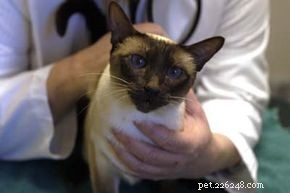
Choosing a veterinarian for your cat is a lot like choosing a doctor for yourself. You want someone with a good bedside manner and someone you like and trust. If you have special needs, you also want a doctor who understands and keeps those needs in mind.
Finding a Vet
If you're a first-time cat owner, have recently moved to a new area, or need to find a new veterinarian, you can just try opening the Yellow Pages to "Animal Hospitals." All veterinarians go to school as many years as medical doctors and have to meet strict standards for licensing, so you're bound to find a competent and professional vet that way. But the relationship among you, your pet, and your vet is going to last for many years, and if you took the time to find just the right cat, it makes sense to find the right vet. This might be the one area where city folk have it over country folk. A small town may just have one vet, while a big city has dozens within several miles.
Besides the Yellow Pages, here are some other sources for finding a good veterinarian:
Contact professional organizations. The American Veterinary Medical Association (www.avma.org) can refer you to affiliated veterinarians in your area, and the American Animal Hospital Association (www.aahanet.org) can direct you to clinics that meet its standards. The AVMA can also help you find feline specialists, behavior experts, veterinary eye doctors, and other professionals. Like any specialist, though, expect to pay heftier fees.
Get recommendations from other "cat people." Friends, family, and neighbors who have cats usually also have veterinarians. Take advantage of their experience, and get recommendations from them.
Look Before You Leap
Once you get a referral for a veterinarian, call up, introduce yourself, and find out when you can drop by to see the facilities and meet the doctors. Make your visit brief but thorough. Be discriminating, but don't be put off if the vet and the clinic staff can't spend a long time with you -- they do have a hospital to run and patients to take care of. If you have a lot of questions and need the vet's undivided attention, the most polite thing to do is make an appointment -- and offer to pay for it.
If you are going to drop by the facility and meet with the vet, here are some items to consider:
Feline Vaccinations What exactly are vaccinations, and how do they help keep cats healthy? Here's how most vaccines work. Researchers find the germ causing the disease--for example, the virus that causes feline distemper. Next they produce a harmless, noncontagious version of the virus. This form of the virus is used to vaccinate healthy cats. The vaccine triggers the cat's disease-fighting immune system, which attacks and destroys the virus. This exposure "primes" the immune system so that if the same virus shows up again -- even the dangerous, contagious version -- it will be destroyed before it can cause illness.Vaccines protect your cat from common diseases, mostly caused by viruses. When a virus invades an animal's body, no medicine can kill it. You can give a cat with a virus things like antibiotics from now until doomsday, and it won't cure the disease (although the antibiotics will help treat or control infections that might start as a result of the cat's being sick with the virus). Viral diseases just have to run their course, after which the victim is often immune for life. Vaccines (usually with regular booster shots) provide your cat with the benefits of being immune without actually having to suffer through the disease.
Vaccines can't cure diseases caused by viruses. Going back to feline distemper for a moment, if a cat has already contracted this disease, the vaccine won't stop it. Vaccines also can't prevent every viral disease every time. No vaccine is 100 percent effective, so every once in awhile a cat who has all his shots will still get sick with something he's supposed to be protected against. Some diseases, like FIV, are caused by viruses that shut down the immune system when they first enter the cat's body. In those cases, the vaccine can't do its job because its tools (the disease-fighting system of the cat's body) have been taken away.
Get your cat's shots from a veterinarian or animal hospital. At the bare minimum, cats should be up-to-date on their rabies shot and distemper-combination vaccine. The combination shot usually carries protection against feline distemper (panleukopenia) and common upper respiratory diseases that cause cold- or flu-like symptoms in your cat (feline viral rhinotracheitis, calicivirus, and chlamydia). Vaccines may be given as an injection under the skin or in the muscle or as an aerosol administered directly into the cat's nostrils.
Any cat being vaccinated for the first time usually needs a series of shots, spaced several weeks apart. For kittens, these shots start at seven or eight weeks of age and continue until they are four months old. Rabies vaccines are given as one shot administered initially to a kitten over three months of age and to adults of any age. The American Association of Feline Practitioners recommends that subsequent boosters for many diseases (depending on the type of vaccine used) be given a year from the initial series and then every three years thereafter. Check with your veterinarian for vaccine scheduling recommendations for your cat.
Vaccines for other cat diseases have been around since the mid-1980s, particularly the one for feline leukemia virus (FeLV). FeLV (or FeLeuk, as it's sometimes known) attacks a cat's white blood cells and can produce a kind of cancer. Research shows that most cats exposed to FeLV don't get sick, but even infected cats who appear healthy can still pass the virus on to other cats. Once a cat does get sick from FeLV, though, the odds of recovery are poor.
The FeLV is a funny creature -- it doesn't last long outside of a cat's body, unless it stays a little moist. So the most common way FeLV gets passed is prolonged close contact between a healthy cat and infected cat -- things like mutual grooming, or sharing food, water, or litter boxes. This also means that the FeLV vaccine may not be necessary for a cat that is never exposed to FeLV-infected cats. A simple blood test can determine if your cat (or any new cat you're thinking of taking into your home) is infected. If not, keeping your FeLV-free cats indoors and away from FeLV-infected cats is probably all the protection they need (outdoor or indoor/outdoor cats are a different story). If your cat tests positive for FeLV, the vaccine won't help, either; vaccines don't kill the virus, they only protect uninfected cats from getting it.
Feline immunodeficiency virus (FIV) and feline infectious peritonitis (FIP) are also fatal cat diseases caused by viruses. There are laboratory tests for their detection, but the test used currently for FIP can give inconclusive results. Vaccines exist for FIV and FIP, but the jury is still out on their effectiveness in preventing disease transmission. Your veterinarian can help you figure out if your cat is at risk for these diseases and if the potential benefits of each vaccine outweigh the risks.
While you will face many challenges as a pet owner, you now know the basic care tips that every cat needs to be happy and healthy.
Publications International, Ltd.